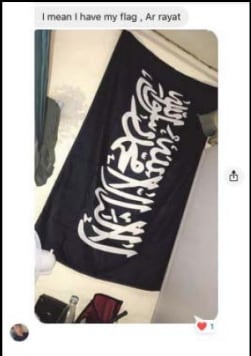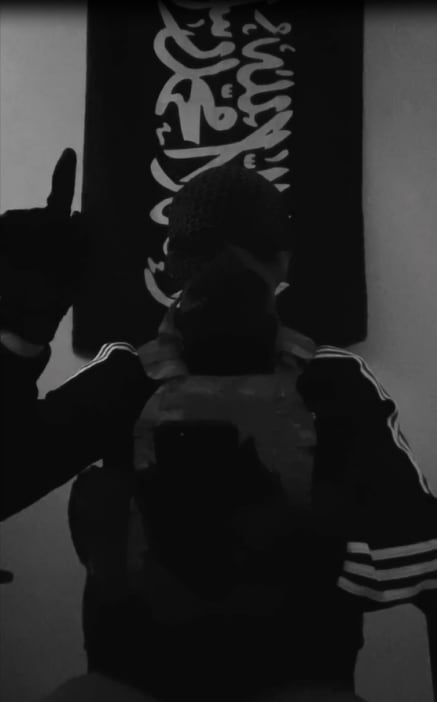A 3rd Infantry Division soldier was arrested Tuesday in Georgia on charges that he plotted to blow up New York City’s 9/11 Memorial and provide the Islamic State group with tactics and information for killing U.S. service members overseas.
Army Pfc. Cole James Bridges, also known as Cole Gonzales, began communicating online with an FBI employee posing as an ISIS supporter in September 2020, according to court documents.
Bridges believed the person he was communicating with was in contact with ISIS fighters in the Middle East and provided the purported ISIS supporter with Army training materials and advice for attacking targets in New York City, including the 9/11 Memorial.
The Federal Bureau of Investigation and Army Counterintelligence arrested Bridges on Tuesday, according to a press release from the U.S. Attorney’s Office for the Southern District of New York.
He was charged with attempting to provide material support to a designated foreign terrorist organization and attempting to murder U.S. military service members, the press release stated.
If convicted of both charges, Bridges faces a maximum sentence of up to 40 years in prison.
“As alleged, Cole Bridges betrayed the oath he swore to defend the United States by attempting to provide ISIS with tactical military advice to ambush and kill his fellow service members,” said Manhattan U.S. Attorney Audrey Strauss. “Our troops risk their lives for our country, but they should never face such peril at the hands of one of their own.”
Bridges, 20, of Stowe, Ohio, joined the Army in September 2019 as a cavalry scout and was assigned to the 3rd Infantry Division at Fort Stewart, Georgia. By December, he had begun searching the internet for terms including “us soldier shooting,” “badass jihadi,” and “ak 47 downsight,” according to court documents.
A year after enlisting, Bridges began messaging an FBI employee posing as a female ISIS supporter, according to court documents. He told this contact that he had joined the military to convince his family he was not involved with terrorist organizations.
“I used to have connections with people in Hamas and Isis, and my family found out and the government could have arrested me. So I needed to prove to them I wasnt what they thought I was, and I needed the government to get off my back. I dont tell people Im in the military, and I hate displaying the US flag on my shoulder,” Bridges messaged.
When later asked how he had managed to join the Army, Bridges told the covert FBI employee that Homeland Security has visited his work before he enlisted and that investigators had visited the base where he was stationed on Oct. 8, 2020.
Bridges also sent an image of a black and white banner, saying: “I mean I have my flag, Ar rayat.”

“I believe the flag depicted in the photograph Bridges sent is a banner used by jihadists, including ISIS,” an FBI special agent wrote in the criminal complaint against Bridges.
Throughout his conversations with the covert FBI employee, Bridges referred to ISIS fighters as his “brothers,” at one point telling saying: “The brothers who have been fighting to establish a khilafah have inspired me a lot, they’re love for Allah and courage to go against all of this world to raise His word to the highest.”
Khilafah is the Arabic word for a caliphate, or unified Islamic state.
When asked what he would do if his unit took contact from ISIS fighters, Bridges said he would “probably go with the brothers.”
Shortly thereafter, Bridges began offering to share his military training and knowledge with ISIS fighters, stating that he could teach them fighting, combat techniques, movements, and formations, court documents show.
The covert FBI employee told Bridges she would introduce him to her brother, a U.S. military veteran working with ISIS supporters in New York City to plan an attack.
In reality, this “brother” was the same FBI employee using a different account.
Bridges began sending images of Army field manuals with diagrams of combat tactics to a group chat with this account and the account of an FBI confidential source posing as an ISIS supporter in France.
From October to November 2020, the cavalry scout explained to the purported ISIS supporters tactics including react to contact drills, breaking contact, and using fires to force enemies into a kill zone.
The group began discussing attacks on Nov. 13.
“If you want these attacks to succeed, you’ll have to plan every last bit of detail and have multiple back up plans and avoid all costs of being captured,” Bridges said, discussing with the group the number of people and weapons available.
At the time, Bridges was on a rotation to Germany with his unit but offered to come visit New York upon his return to help plan an attack.
In the same conversation on Nov. 13, the covert FBI employee sent photographs of government buildings around New York City and told Bridges he was worried that everything was too heavily guarded.
When discussing an attack on the 9/11 Memorial, Bridges stated that he believed the 9/11 attacks were murder, according to court documents. The covert FBI employee explained that he was considering an attack when government officials came through the memorial.
“That could honestly be a sniper kill and then getting out quietly for a second attack,” Bridges responded.
Bridges later changed his mind, deciding that a domestic attack would be an “offensive jihad.” The cavalry scout sent a message on Dec. 27, 2020, expressing his desire to help plan an attack against U.S. service members in the Middle East. Such an attack would be a “defensive jihad,” he said.
The covert FBI employee relayed to Bridges images of a compound, telling him the images had been provided by ISIS fighters who wished to protect their leader from an attack by U.S. Special Forces.
In the conversation that followed, Bridges and the covert FBI employee discussed the best placement for weapons and how to wire the building with explosives to be detonated when U.S. forces entered.
“Definitely rig the house with explosives if they can,” and “Put a Light machine gun and a RPG on the roof,” Bridges said, according to the criminal complaint against him.
“The brothers will be so thankful akhi… your expert advice will help our brothers kill the kuffar when they come to attack,” the covert FBI employee responded.
The FBI employee told Bridges later that day that the ISIS fighters had greatly appreciated the information he provided.
Bridges sent a video on Jan. 6 of himself in combat gear making gestures of support for ISIS and standing in front of the black and white flag used by jihadists, according to the criminal complaint. Six days later, he sent another video encouraging an attack against U.S. forces.

“Fortunately, the person with whom he communicated was an FBI employee, and we were able to prevent his evil desires from coming to fruition,” said FBI Assistant Director William F. Sweeney Jr. “Bridges could have chosen a life of honorable service, but instead he traded it for the possibility of a lengthy prison sentence.”
The FBI’s New York Joint Terrorism Task Force, which includes personnel from the NYPD, worked alongside U.S. Army Counterintelligence, Army Criminal Investigative Division, the 3rd Infantry Division, numerous FBI field offices, the Air Force Office of Special Investigations, and the U.S. Attorney’s Office for the Southern District of Georgia to bring Bridges to justice.
“The results of this investigation show the efforts of Army Counterintelligence agents working alongside our partners in the FBI,” said Roy T. Cochran, director of the Army Counterintelligence Coordinating Authority. “We are dedicated to protecting our Soldiers, Civilians, and Families from terrorist acts and insider threats.”
Bridges is expected to appear in federal court in Georgia on Thursday. It was not immediately clear who would represent him.
Harm Venhuizen is an editorial intern at Military Times. He is studying political science and philosophy at Calvin University, where he's also in the Army ROTC program.





